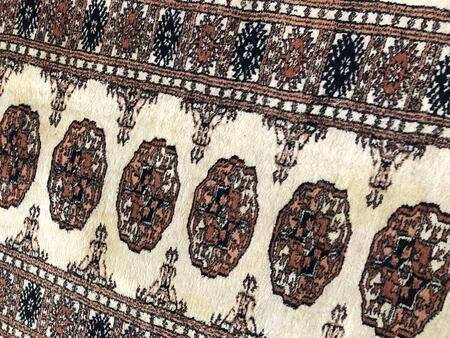bukhara
Like many older Oriental Rug Designs, the Bukhara design was often interpreted by many different weaving countries. The Bukhara design a traditional repetitive pattern using a design element known as a "gul". The gul design is actually a stylized flower. Guls often vary in shape and design from rug to rug, but in any given individual weaving, the guls are arranged in uniform rows and columns in the field. Generally speaking, the guls may come in many forms. Most often, they are slightly oblong, shapely yet geometric. The Bukhara design is also sometimes referred to as the "elephant footprint" because of the general shape of such design element. Bukhara rugs are almost always wool pile on either a wool or cotton foundation however this depends highly on country of origin. These rugs are usually made by nomads.Central Asian Bukharaon horizontal transportable looms with a different weave to Pakistani Bukharas, and generally are based on the Senneh knot. The wool pile of the rugs is far shorter than Pakistani Bukharas and the design is more intricate, requiring a higher density of knots. The colors of the Central Asian Bukharas are also predominantly rust, red, and brown. Unlike Pakistani Bukharas, which use cotton bases, the Central Asian Bukharas tend to use a predominantly wool base. The feel of the pile is generally tighter and denser as a result of different wool and greater clipping of the pile. Both vegetable dye and synthetic dye Central Asian Bukharas can be found.
read more
- width:
- length:
- retail:
- trade:
- ARCHIVE SALE
- VEGAN
- ECO-FRIENDLY
- Round
- Square
- Runner

